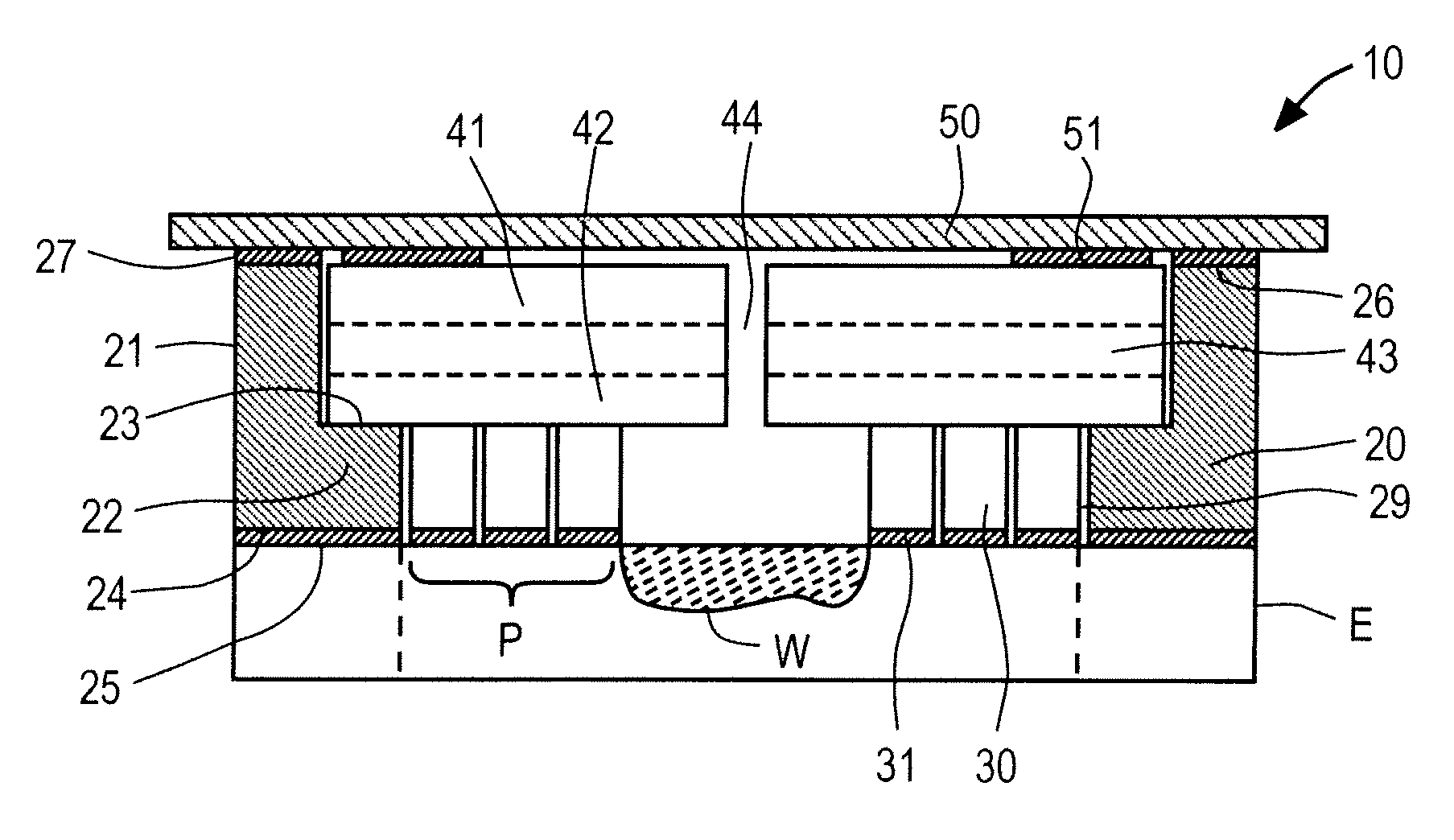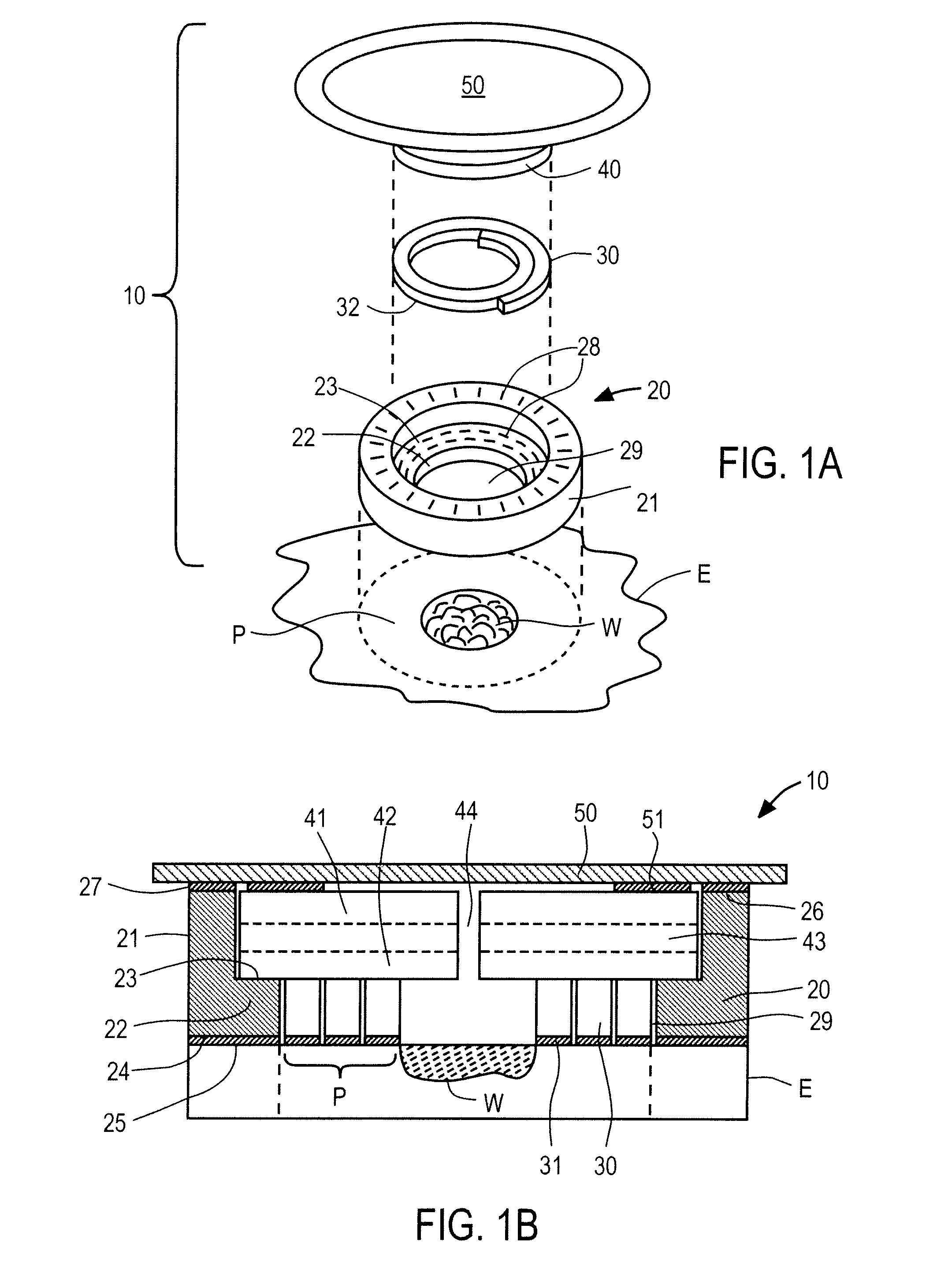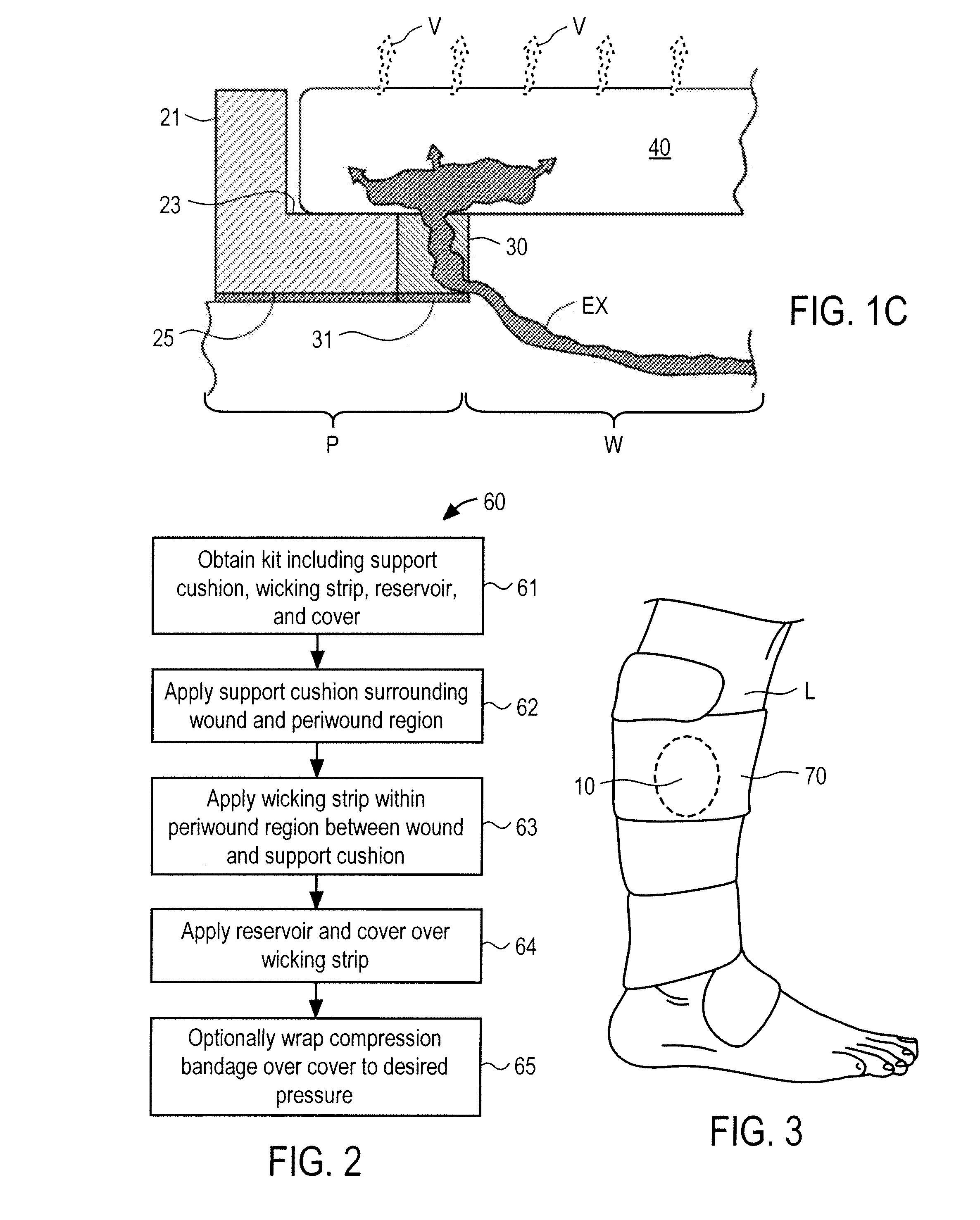Wounds occur when the integrity of any tissue is compromised, affecting one or more
layers of skin.
The latter issue, referred to here as the sticking issue, leads to deleterious consequences for the patient.
This problem is particularly exacerbated when wounds are left unattended for a substantial period.
Equally important, tearing of skin graft, newly formed cells or scab adhered to dressing disrupts the healing process.
In addition to damaging the wound,
exudate damages the periwound tissue exposed to it as well.
In particular,
exudate that flows out of the wound and onto periwound region may damage the fragile skin, which is already compromised due to the patients underlying
etiology, such as diabetes.
Such damage may degrade the periwound skin and cause its breakdown and turn it into a wound.
Thus,
exudate flow onto the periwound region may cause many complications, including the potential for increasing the size of the wound and prolonging its healing.
Such damage to the skin in the periwound region (periwound skin) may make the skin more susceptible to tearing and
resultant intense pain as dressings or devices adhered to them are removed.
Other complications may include, for example, infection of the periwound region and intense
itching.
Patients suffering from chronic wounds frequently report experiencing severe and persistent pain associated with such wounds, which may arise from
necrosis of and / or nerve damage of the skin and underlying tissue.
Although a wide variety of primary dressings have been developed, few previously-known
wound treatment systems properly manage exudate, e.g., by removing a sufficient amount of exudate from the
wound site, while protecting the periwound region from damaging contact with the exudate.
For example, gauze, which is applied directly onto a wound, is capable of absorbing only a limited amount of exudate, and readily transports excess exudate onto the periwound region, causing maceration and damage.
Moreover, the gauze typically is in direct contact with the wound and adheres to it, so that normal motion of the patient results in
rubbing,
itching and discomfort.
In addition, removal of the gauze at periodic intervals is painful and frequently disrupts any healing that may have occurred.
However, such methods are not always satisfactory because soaking a particular wound in water or applying ointments may not be practicable or recommended.
Regardless of the level of adherence of such dressings to the wound, continuous contact between the primary dressing and wound disturbs the fragile wound matrix, and may undermine the growth of blood vessels and epithelial cells in the wound
bed.
Such disturbance often occurs when the dressing is removed, or simply as a result of the contact between the bandaged area and the patient's environment.
Pain is often concomitant with such disturbances.
In addition, previously-known “non-stick” dressings usually do not absorb sufficient amounts of exudate, and thus require frequent monitoring and changing.
These drawbacks add to the cost of use and limit the applicability of such previously-known wound treatment systems.
Previously-known primary dressings commonly have only a limited ability to manage
wound exudate.
As noted above,
prolonged exposure of otherwise healthy skin to exudate may cause degradation of the periwound region.
The
moisture of the exudate may cause maceration, which is a
softening of the skin that compromises its integrity and makes the skin in the periwound region vulnerable to physical insult and infection.
Some previously-known primary dressings attempt to manage exudate to address the foregoing issues, but provide either limited benefit and / or at a much higher perceived cost.
However, use of this product is restricted to highly exuding wounds, because its highly absorptive properties can result in
desiccation of wounds that are not highly exuding, thereby impeding healing.
In addition, because foam used in that product cannot be conformed to the size and shape of the wound, the dressing typically overlaps with the periwound region.
Consequently, exudate absorbed by the foam is transported throughout the foam and onto the periwound region, where
prolonged exposure leads to maceration and degradation of the periwound region.
Consequently, exudate is not sufficiently drawn from the wound, and its buildup in the wound may adversely affect the wound and periwound region.
Furthermore, ALLEVYN®, ACQUACEL®, and similar previously-known primary dressings do not provide an adequate
moisture vapor transfer rate (MVTR) away from the wound environment, thus creating the potential for an over-hydrated environment that hinders
wound healing.
However, such systems are costly, difficult to apply and
time consuming.
In addition, because such systems require
insertion of a
sponge (for the V.A.C.®
system) or gauze (as commercialized by other
wound care companies) directly into the wound
bed, they likely cause considerable pain and discomfort for the patient, and may not be appropriate for many types of wounds.
Such previously-known primary dressings, however, also have failed to adequately heal wounds and protect the periwound region.
Such non-contact dressings are provided in pre-formed shapes and sizes, and have limited deformability, thus limiting their ability to prevent
exposure of the periwound skin to exudate.
Additionally, the limited deformability of such previously-known dressings makes application of such dressings difficult or impossible to wounds on small surfaces or in areas with complex topology, such as the
ankle or foot.
Previously-known non-contact primary dressings also do not allow the pressure applied to the periwound region to be readily managed, and may result in the formation of pressure rings around the wound, thereby inducing
ischemia in the wound and surrounding tissue.
Finally, such previously-known primary dressings do not provide any mechanism to stimulate the flow of exudate, nor do they sequester exudate away from the wound in any appreciable volume.
Such previously-known primary dressings also trap
humidity over the wound and periwound region, leading to maceration, periwound degradation and impeded healing.
However, it may not always be practicable or safe to secure a primary dressing using a previously-known secondary dressing, such as an ACE™
elastic bandage (3M).
For example, using such a
bandage to secure a primary dressing over an upper body wound may involve wrapping the
bandage around the entire
torso, which may undesirably compress internal organs, may be uncomfortable, and also may be inconvenient to place and remove on a frequent basis.
Other body parts over which it may be difficult to secure primary dressings include joints that undergo a relatively
large range of motion during normal use.
 Login to View More
Login to View More  Login to View More
Login to View More 


